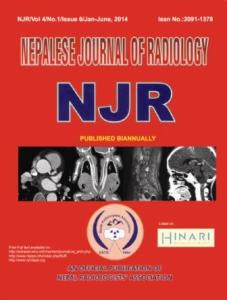Role of Ultrasound in Determining the Nature of Pleural Effusion
DOI:
https://doi.org/10.3126/njr.v4i1.11367Keywords:
Ultrasound, pleural effusion, exudates, transudateAbstract
Purpose of the study: The differentiation of pleural effusion into transudate and exudate may affect the diagnostic approach and patients’ management. The conventional Light criteria require both pleural fluid and blood samples along with three biochemical tests. This study was undertaken to assess the usefulness of ultrasound as an alternative in differentiating the type of pleural effusion.
Method: A prospective cross sectional study was conducted over a period of one year. Eighty patients clinically diagnosed to have pleural effusion underwent high frequency ultrasound and also lab tests for Light criteria. The efficacy of ultrasound was then assessed in differentiating transudate from exudate.
Results: It was concluded in our study that all pleural effusions which were echogenic on ultrasound, with or without septations or with pleural thickening more than 3 mm (n=46) were exudates (p< 0.01). The anechoic effusions on ultrasound could be transudates or exudates.
Conclusion: Ultrasound acts as a useful non invasive alternative for determining the type of pleural effusion.
DOI: http://dx.doi.org/10.3126/njr.v4i1.11367
Nepalese Journal of Radiology, Vol.4(1) 2014: 34-37
Downloads
Downloads
Published
How to Cite
Issue
Section
License
This license enables reusers to distribute, remix, adapt, and build upon the material in any medium or format, so long as attribution is given to the creator. The license allows for commercial use.




